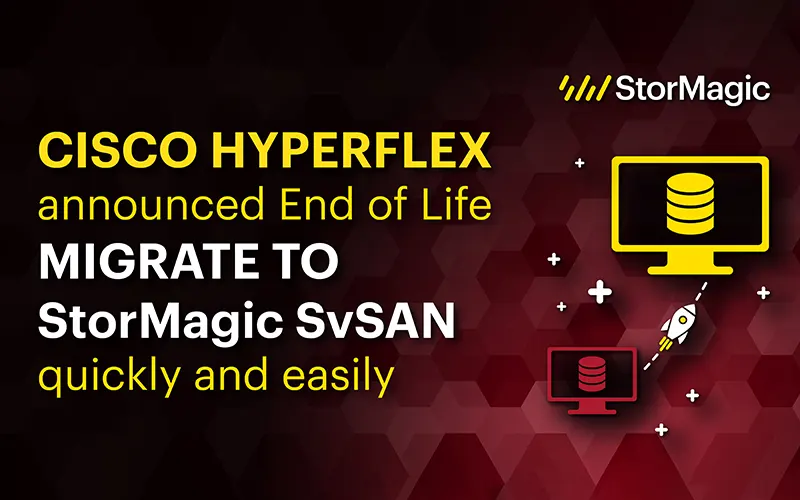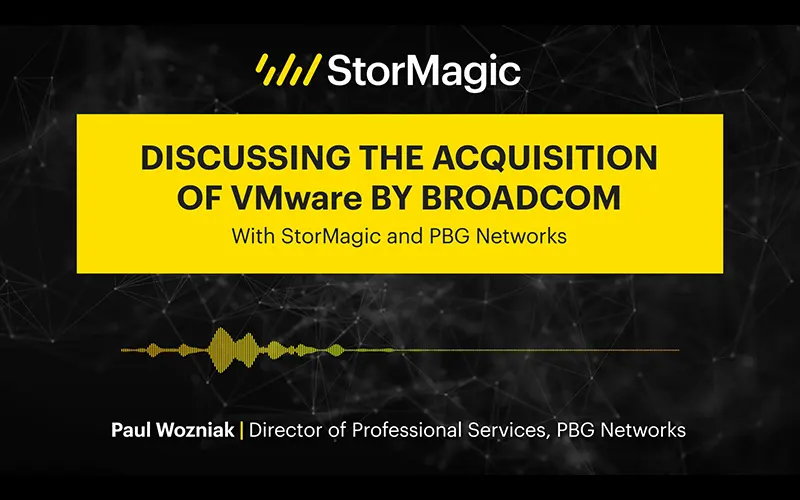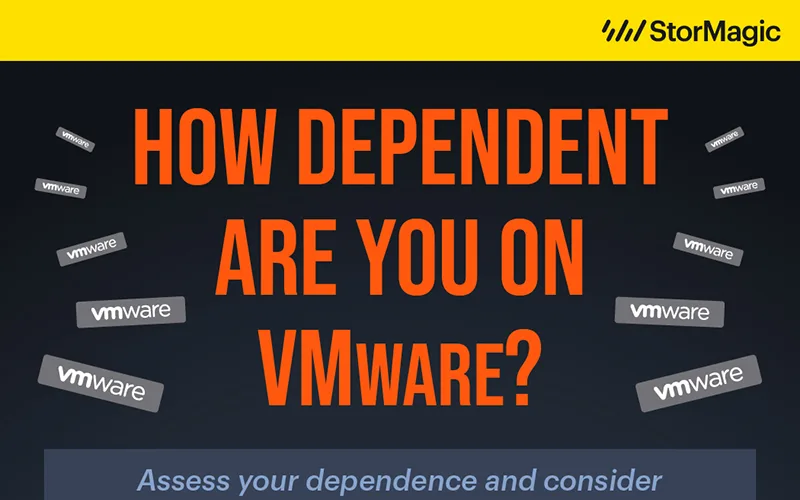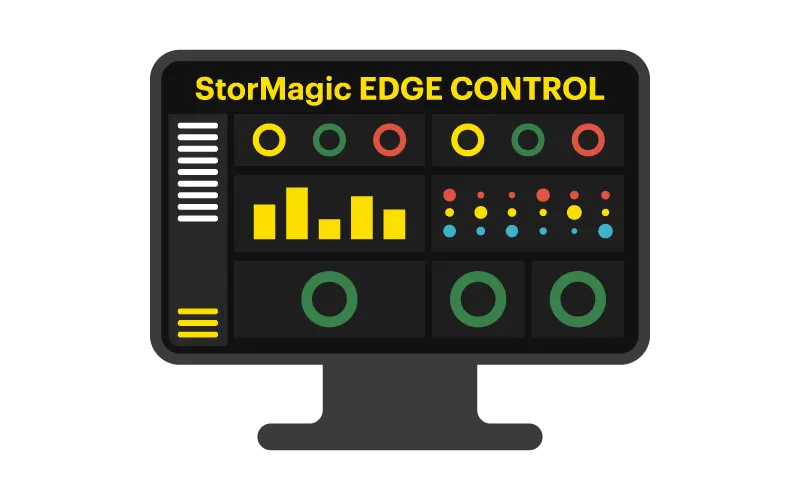Cisco’s announcement of HyperFlex’s end-of-life has come as a surprise to many of its customers. Feelings of concern and uncertainty about what the future holds are understandable, even with Cisco proposing alternatives for their soon-to-be-retired solution.
In this blog we will explore Cisco HyperFlex’s EOL, detailing what it means for customers, what is being proposed as its direct replacement, and whether the solution is suitable for SMBs and edge computing environments.
When will HyperFlex reach its EOL? And what does this mean for its customers?
On September 12th, 2023, Cisco officially announced the end-of-life (EOL) for the Cisco HyperFlex Data Platform (HXDP), setting its sunset date for September 11th, 2024.
For current HyperFlex users, this marks a pivotal moment, forcing them to explore new avenues to meet their site’s computing requirements. The EOL decision has left many feeling overwhelmed by the multitude of choices available, coupled with concerns about whether alternative solutions, including Cisco’s proposed replacement for the platform, can truly deliver on their promises.
A prevalent worry among users is the fear of over-provisioned solutions which drive higher costs and greater inefficiencies through unnecessary features and limited compatibilities. In response, HyperFlex users are actively seeking alternative hyperconverged infrastructure (HCI) solutions that align better with their specific needs.
Customers are therefore beginning to explore the offerings of other vendors to identify a suitable replacement for HyperFlex. But without proper guidance, it can be all too easy to get locked into a solution that’s a poor fit. Consequently, it’s crucial that HyperFlex customers carefully assess their future HCI needs to aid a smooth transition to alternative solutions that cater to their specific requirements without the need to over-provision.
Seeking guidance from trusted partners and vendors is paramount to ensuring a seamless migration to a new HCI platform that aligns with their long-term business objectives.
What is Cisco proposing as the direct replacement for HyperFlex?
Cisco has proposed Nutanix software, running on Cisco hardware, as the direct replacement for HyperFlex.
Thanks to the specifications of Nutanix’s hyperconverged solution, this partnership does present an opportunity for HyperFlex users needing a high-intensity solution with enhanced HCI capabilities for a datacenter environment.
Is Nutanix a suitable HCI solution for edge computing environments and SMBs?
Unlike those deploying in the datacenter, for SMBs and organizations operating in edge environments (particularly those needing to roll out architecture across multiple sites), datacenter-class solutions like Nutanix are unsuitable for a number of reasons.
First is its price point. With a minimum of three nodes per cluster and high system requirements, Nutanix is a premium solution. Particularly on VMware vSphere, the costs can soar, reaching upwards of $40,000 per node, making it a substantial investment.
While this pricing model might align well with organizations operating within a single data center with ample budgetary resources, it presents challenges for those spanning multiple sites. Additionally, small to medium-sized businesses, operating on tighter budgets, may find Nutanix’s solution financially prohibitive.
Secondly, Nutanix’s hardware requirements, mandating SSD for caching and 10 GbE or faster for networking, exceed the needs of many edge sites and small businesses. Using such a solution could lead to over-provisioning and unnecessary expenses for resources that may not be fully utilized.
Lastly, to maintain high availability when one server is offline, Nutanix necessitates a minimum of 5 nodes. This not only demands significant rack space, a luxury not always available at edge sites, but it also increases both upfront and running costs per site.
Deploying Hyperconvergence – Choose Wisely
StorMagic SvSAN: A simple HCI solution for SMBs and edge computing environments
For edge computing environments and SMBs, StorMagic SvSAN stands as an optimal replacement for Cisco HyperFlex, outshining Nutanix in a variety of aspects.
With a robust, lightweight architecture, SvSAN requires just two nodes for high availability, significantly reducing OPEX and CAPEX costs. If high availability is required when one node is down, SvSAN can achieve this with three nodes (one offline, remaining two providing HA), compared to Nutanix’s recommended five nodes.
SvSAN has the lowest hardware requirements among hyperconverged storage solutions and offers a straightforward, user-friendly deployment, allowing installation on any x86 server, new or existing, with diverse storage configurations and 1GbE networks. Existing HyperFlex customers may appreciate the CapEx and OpEx reduction that SvSAN offers with their current hardware, since StorMagic does not require them to upgrade to the latest appliances.
Unlike Nutanix, SvSAN also boasts the unique ability to use one lightweight witness for thousands of clusters, further streamlining management. It also supports both VMs and containers to ensure the adaptability of diverse workloads and provides a robust, flexible solution for data security, disaster recovery, and easy scalability for future growth. Plus, with StorMagic, vSphere, Hyper-V, or KVM hypervisors can be used. Nutanix runs on vSphere or Acropolis (AHV) only.
What’s more, with the solution starting at under $10,000 for two servers and the software, SvSAN provides exceptional value for both enterprises with edge sites and SMBs.
How to migrate from Cisco HyperFlex to StorMagic SvSAN
Migrating from Cisco HyperFlex to StorMagic SvSAN is quick and easy, and demonstrated in this step-by-step migration guide.
Furthermore, any organization wishing to migrate from HyperFlex to SvSAN can engage the StorMagic Technical Services team for guided assistance in the migration process to make it even easier. To get started, simply contact us!




